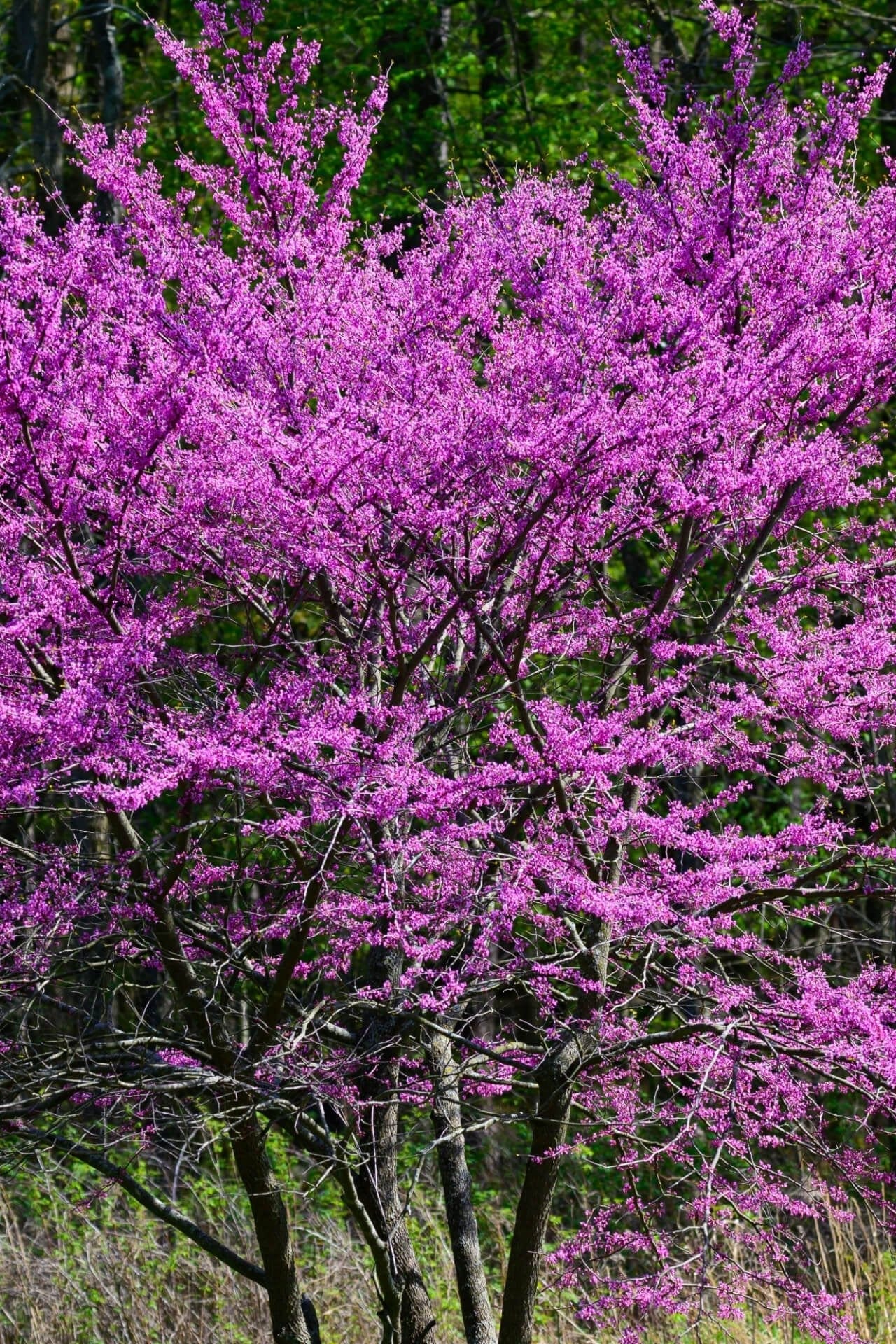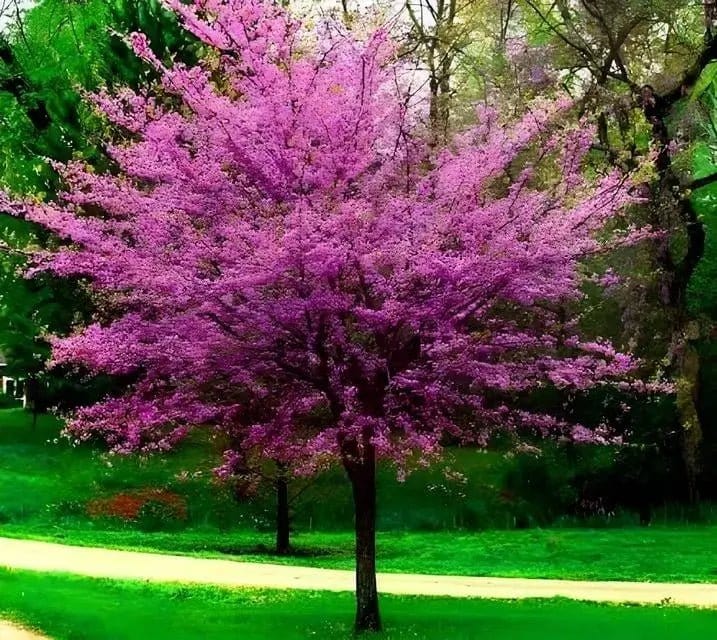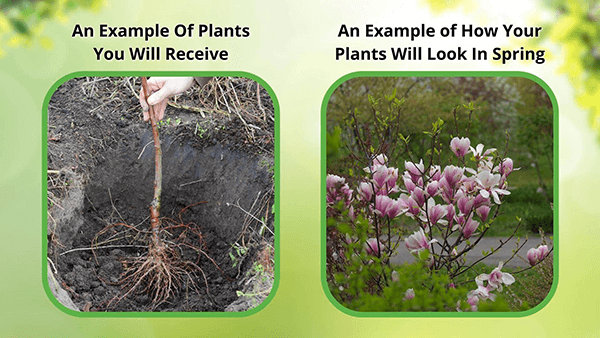Redbud Tree
Redbud Tree
| Order | Percentage Discount | ||
|---|---|---|---|
| 2-5 | 25% Off | ||
| 6-10 | 30% Off | ||
| 11-25 | 35% Off | ||
| 26-50 | 45% Off | ||
| 51+ | 65% Off | ||
Couldn't load pickup availability
Redbud Tree
Redbud Trees (Cercis canadensis) are small deciduous trees popular among gardeners and landscapers for their beautiful pink or purple flowers blooming in early Spring 2024. This tree species is native to eastern North America and can thrive in various soil types, making it an ideal choice for many landscaping projects.
Redbud Tree's Characteristics
They typically grow 20-30 feet tall and wide, with a rounded shape and a slightly irregular branching pattern. Their medium green heart-shaped leaves can grow up to 5 inches long. In the spring of 2024, the tree produces clusters of pink or purple flowers covering branches and twigs.
Growing Requirements
They prefer full sun to partial shade and can tolerate various soil types, from sandy to clay. Once established, they prefer well-drained soil and are moderately drought-tolerant. They are hardy in U.S.D.A. Zones 4-9.
The Tree's Uses in Landscaping
They are popular ornamental trees often used as garden centerpieces or shade trees for a patio or deck. They can also be used as street trees or planted in a mixed border. They are relatively low-maintenance. When purchasing a tree from a nursery, selecting a healthy specimen with a straight, sturdy trunk and well-spaced branches is essential. Look for a tree with evenly spaced lateral branches and a well-developed root system. Choosing a tree appropriate for your space size and the landscaping project's overall design is also necessary.
The Tree's Benefits
Redbud trees are a beautiful and versatile addition to any garden or landscape. Their stunning Spring 2024 blooms and low-maintenance nature make them an excellent gardener choice. When selecting one of these trees from a nursery, choose a healthy specimen appropriate for your space and landscaping project.
The tree is named because of the pinkish/purple blooms, which are full during April. The tree requires full sun. It can grow between 20' to 30' tall. The spread of the tree is about 25' to 30'. The form of the tree is rounded.
Hardy zones for growing this tree are zones 4-9. This is a beautiful tree to plant near businesses and homes. Its beautiful magenta/purple blooms are what make this tree a favorite. More care is required after the initial planting and watering. The tree also has gorgeous, heart-shaped, green leaves when the blooms have fallen off. In the fall, the green leaves turn to a yellow color.
The tree is beautiful all year long. Once the tree has been planted, it will require a little care, such as watering, but before long, the tree will have established an excellent root system and will begin watering itself. The soil for the tree to be planted should be moist. Because the tree has a small, relatively short trunk, the problem with power lines does not exist.
This is usually OK. Planting the tree in a partly shady area should also work well for this particular tree. The tree is commonly cultivated around homes for its beauty. Homeowners use it to decorate their homes. The beauty of the tree and the easy care it requires are two outstanding features of this type of tree.
The trees are usually planted in the fall but are expected to grow in the spring. When planted in the fall, the tree will have all winter to establish a sound root system. The tree can be found in many states. It is mainly grown in the eastern United States and extends as far west as Kansas, Texas, and even Oklahoma.
This Is How Your Plants Will Look upon Delivery
Shipping date depends on the date displayed and chosen when you order from the product's page.
We only accept returns on plants verified dead. If you think your plants have died, we offer a 1 year warranty, please use use this File a Claim Link to verify dead plants and start with return warranty process.




